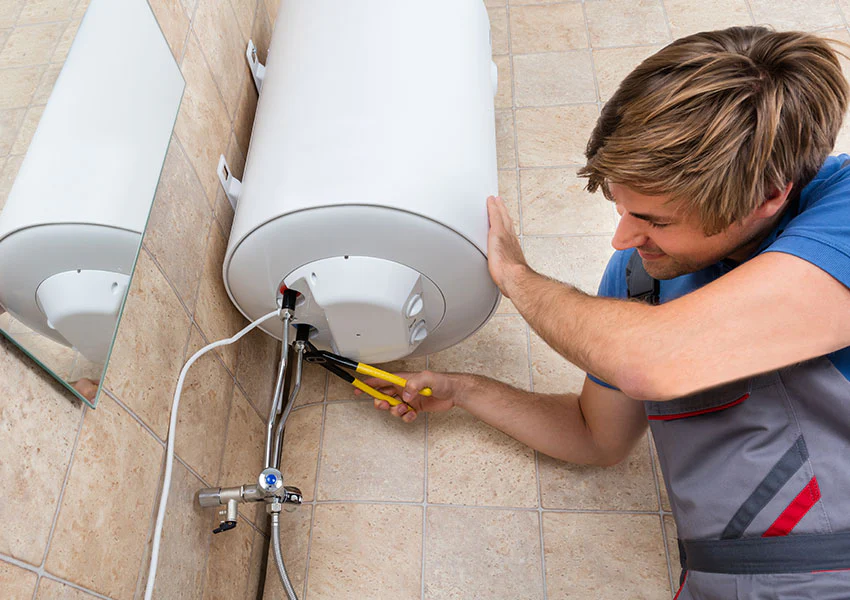Best Methods to Care for Your Home's Hot Water System EffectivelySteps to Successfully Care for Your Home's Hot Water System
Best Methods to Care for Your Home's Hot Water System EffectivelySteps to Successfully Care for Your Home's Hot Water System
Blog Article
The publisher is making a few good points on Tips on Maintaining a Water Heater in general in this post down the page.

Hot water is essential for daily convenience, whether it's for a revitalizing shower or cleaning meals. To ensure your hot water system runs efficiently and lasts much longer, normal upkeep is crucial. This short article offers practical tips and understandings on exactly how to preserve your home's hot water system to avoid disturbances and expensive repair work.
Introduction
Maintaining your home's warm water system may seem daunting, however with a few simple actions, you can guarantee it operates efficiently for several years to find. This guide covers every little thing from recognizing your hot water system to do it yourself maintenance tips and recognizing when to employ expert help.
Relevance of Preserving Your Hot Water System
Normal maintenance not just prolongs the lifespan of your warm water system however also guarantees it operates successfully. Ignoring maintenance can bring about reduced efficiency, greater energy costs, and even early failure of the system.
Signs Your Warm Water System Needs Upkeep
Knowing when your warm water system needs focus can avoid significant problems. Keep an eye out for signs such as irregular water temperature, weird noises from the heating system, or rusty water.
Purging the Water Heater
Purging your water heater eliminates debris accumulation, boosting effectiveness and lengthening its life.
Checking and Changing Anode Rods
Anode rods stop deterioration inside the storage tank. Evaluating and replacing them when worn is crucial.
Complicated Concerns Needing Specialist Help
Instances consist of major leakages, electric problems, or if your hot water heater is consistently underperforming.
Routine Specialist Maintenance Advantages
Specialist maintenance can include complete inspections, tune-ups, and ensuring compliance with safety and security standards.
Examining and Readjusting Temperature Level Settings
Adjusting the temperature level settings makes certain optimal performance and security.
Do It Yourself Tips for Maintenance
You can carry out numerous upkeep tasks yourself to keep your warm water system in leading condition.
Checking for Leaks
Routinely check pipes and links for leakages, as these can bring about water damage and higher expenses.
Comprehending Your Warm Water System
Prior to diving right into maintenance tasks, it's useful to understand the fundamental elements of your warm water system. Normally, this consists of the hot water heater itself, pipes, anode rods, and temperature controls.
Monthly Maintenance Tasks
Routine regular monthly checks can assist capture small problems prior to they rise.
Examining Stress Alleviation Valves
Examining the stress safety valve guarantees it operates appropriately and prevents excessive pressure build-up.
Shielding Pipelines
Shielding warm water pipelines lowers warmth loss and can conserve power.
When to Call an Expert
While do it yourself maintenance is useful, some problems need expert knowledge.
Final thought
Regular maintenance of your home's hot water system is essential for performance, long life, and price financial savings. By complying with these suggestions and knowing when to seek specialist aid, you can make sure a trustworthy supply of warm water without unforeseen disruptions.
How to Maintain an Instant Hot Water Heater
Before tinkering with your hot water heater, make sure that it’s not powered on. You also have to turn off the main circuit breaker and shut off the main gas line to prevent accidents. Also turn off the water valves connected to your unit to prevent water from flowing into and out of the appliance. 2. When you’re done, you have to detach the purge valves’ caps. These look like the letter “T” and are situated on either side of the water valves. Doing so will release any pressure that has accumulated inside the valves while at the same time avoid hot water from shooting out and burning your skin. 3. When the purge valves’ caps are removed, you have to connect your hosing lines to the valves. Your unit should have come with three hoses but if it didn’t, you can purchase these things from any hardware or home repair shops. You can also get them from retail stores that sell water heating systems. Read the user’s manual and follow it to complete this task properly. When the hosing lines are connected, open the purge port’s valves. 4. You should never use harsh chemical cleaners or solutions when cleaning your unit. Make use of white vinegar instead. It should be undiluted and you’ll probably use about 2 gallons. 5. Now flush your water heater. This task should probably take about 40 minutes. We can’t give you specific directions for this because the procedure is carried out depending on the type, model and brand of your heater. With that being said, refer to the user’s manual. 6. When you’re done draining the unit, you have to turn off the purge port valves again. Remove the hosing lines that you earlier installed on each of the water valves. Put the valve caps (purge port) back in their respective places and be very careful so as not to damage the rubber discs that are found inside these caps. 7. Now that everything’s back in place, check your user’s manual again to find out how to reactivate your water heating system. 8. Once it is working, turn one of your hot water faucets on just to let air pass through the heater’s water supply pipes. Leave the tap on until water flows smoothly out of it. https://www.orrplumbing.com/blog/2014/september/how-to-maintain-an-instant-hot-water-heater/

I stumbled upon that blog posting on How to Maintain Your Water Heater & Prolong its Life when doing a lookup on the search engines. Sharing is nice. Who knows, you will be doing someone a favor. We appreciate your readership.
This Page Report this page